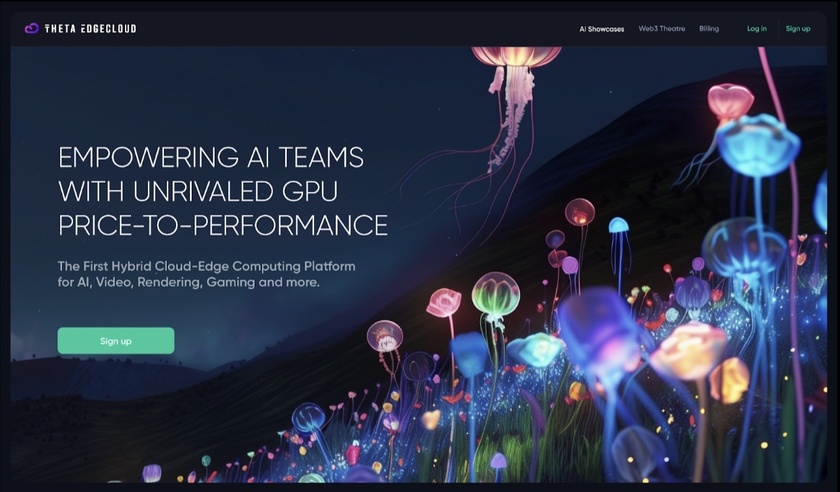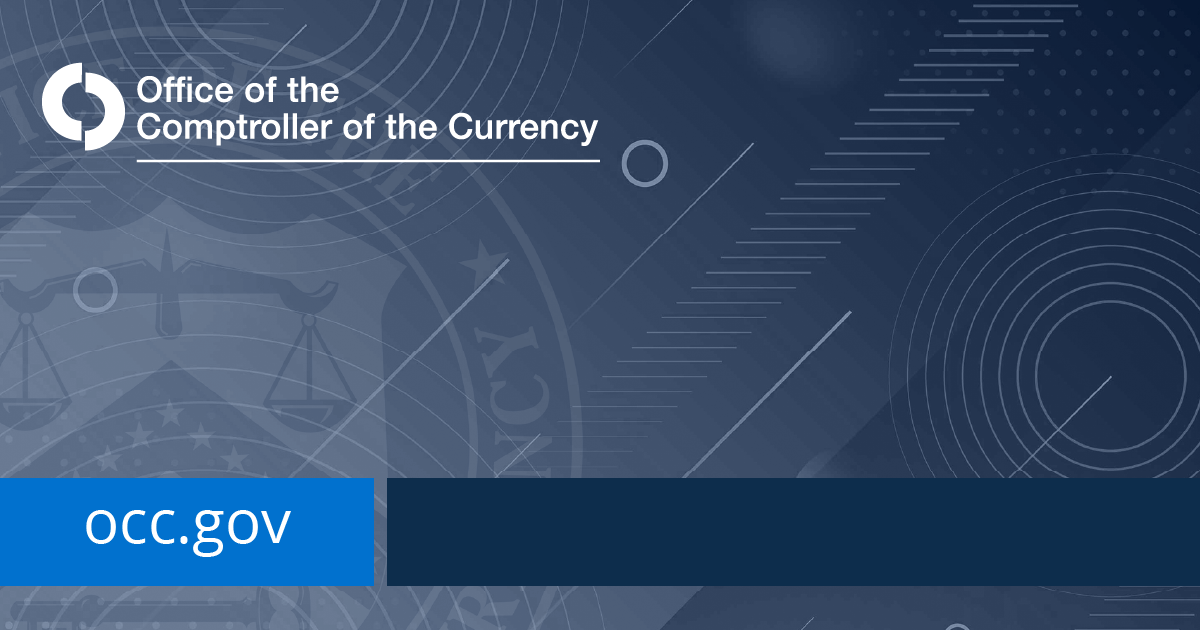Theta Network, the leading blockchain decentralized cloud for AI, media and entertainment, is excited to announce the launch of Theta EdgeCloud, the first hybrid computing platform for AI, video and rendering applications.
Theta's new hybrid cloud-edge computing platform arrives at a critical point, driven by three major industry trends: the widespread adoption of AI across various sectors, forecasted to grow tenfold by 2030; the exponential rise in global video and 3D rendering demand, notably for high-resolution content; and the increasing necessity for modular infrastructure compute services to manage the surge in computation data.
Theta EdgeCloud harnesses the untapped potential of thousands of distributed CPU and GPU nodes worldwide, alongside a sophisticated cloud-based architecture. By optimizing the price-to-performance ratio across these nodes, Theta aims to democratize access to high-performance computing resources, fostering innovation and efficiency across multiple industries and creative endeavors.
EdgeCloud is one of the largest hybrid edge-cloud compute networks in the world, bridging high-performance cloud-based Nvidia A100, V100 and T4 GPUs from partners like Google Cloud and Theta’s decentralized network of 10,000+ global edge nodes. Theta’s Edge Network comprises one of the largest clusters of distributed GPU computing power in the world today. High-performance GPUs, including Nvidia 3090s to 4090s (~1000 nodes), deliver 36,392 TFLOPS; medium-tier GPUs (~2000 nodes) deliver 28,145 TFLOPS; and low-end GPUs (~7000 nodes) deliver an additional 13,002 TFLOPS. This amounts to a total of approximately 77,538 TFLOPS or about 80 PetaFLOPS today, roughly equivalent to 250 NVIDIA A100s, always available.
“The overall market for computing services is expected to grow significantly over the next decade, driven by AI applications across a number of industries. Enterprise spending on cloud infrastructure services reached nearly $74 billion in 2023, with generative AI clearly being one of the main drivers. We’re excited to launch the first hybrid cloud-edge AI computing platform that’s powered by one of the largest distributed GPU networks and the leading Web3 community for AI, media, and entertainment,” said Mitch Liu, co-founder and CEO of Theta Network.
The First Hybrid Edge Cloud AI Network at Global Scale
EdgeCloud delivers a global-scale edge network and a cloud-based GPU infrastructure necessary for running today’s largest AI models. While chatbots like ChatGPT and other large language models are compute-intensive, new generative AI models such as text-to-video, text-to-3D, and sketch-to-3D require 10-100x the amount of computational power. The combined GPU compute power of EdgeCloud is sufficient to run more than 300-1000+ AI models concurrently, arguably holding the keys to the world’s most valuable and disruptive asset: global GPU compute.
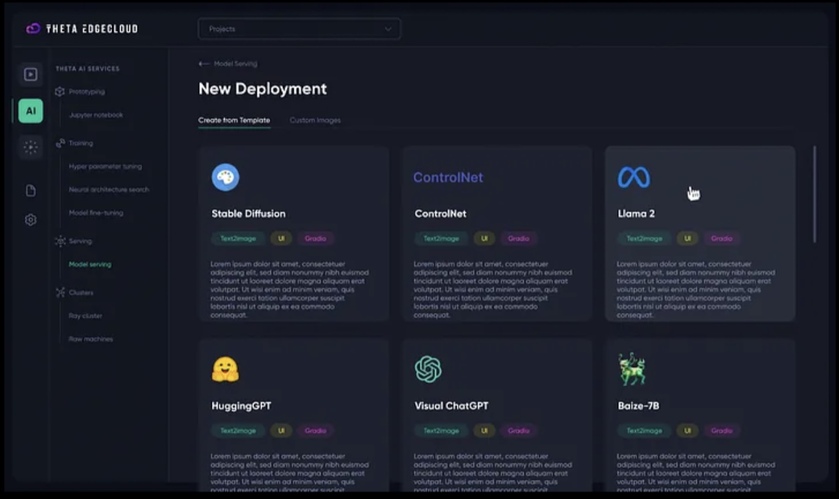
At launch, AI developers can select and deploy popular generative AI and large language models like Stable Diffusion, Llama 2, Mistral, and many other open-source AI models straight out of the box, as well as deploy their own custom models. EdgeCloud provides these users immediate access to key GPU resources including NVIDIA A100s, V100s, T4s, and other GPUs, complete with accompanying dashboards and metrics for their various business use cases. EdgeCloud will launch with about a dozen open-source AI models, representing the most popular in the industry with millions of downloads:
- LLMs: Mistral-8x7B, Mistral-7B, Google Gemma-7B, Meta Llama-2—7B
- Image generation: Stable Diffusion XL (SDXL) Turbo, ControlNet
- Text-to-video: Stable Video Diffusion
- Speech recognition: OpenAI Whisper
- Code generation: CodeLlama
Later this year, Theta will launch its hybrid cloud decentralized GPU marketplace, fully integrated into the EdgeCloud platform. This integration will provide AI developers and enterprises alike with a simple point-and-click capability to train, fine-tune, and deploy both open-source and custom models across cloud partners, decentralized GPU edge nodes, and other data center partners.
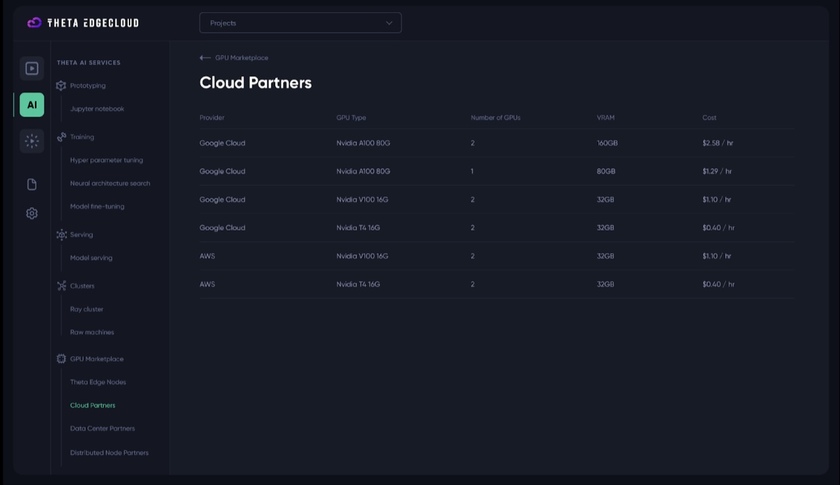
Generative AI Showcase and Jupyter Notebook support
EdgeCloud also launches with a generative AI showcase that enables free interaction with several GenAI models for end users and community members. This provides a great trial experience and an opportunity to see how novel AI applications can be built on the platform.
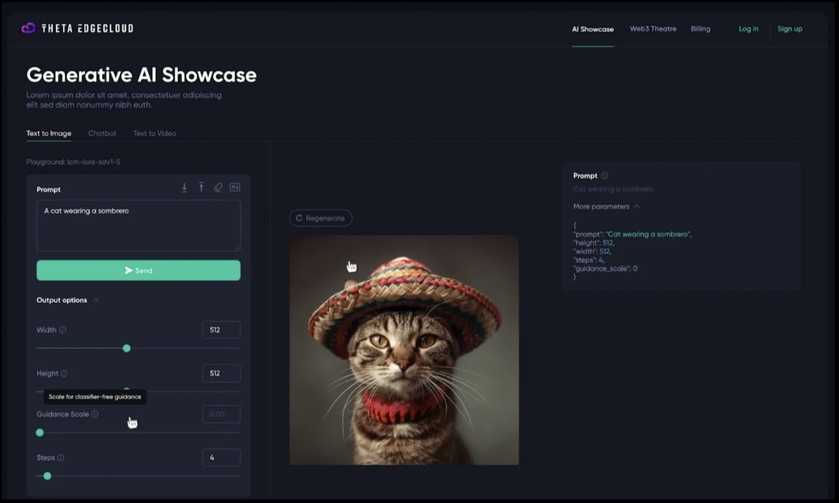
EdgeCloud offers out-of-the-box support for Jupyter Notebook, a web-based interactive computing/coding tool indispensable for AI model development. Customers and partners can start utilizing the platform immediately with full Stripe payment integration, and TFUEL payment support will be added soon after.
About Theta Labs
Theta Labs pioneered Theta Network, the leading blockchain decentralized cloud for AI, media and entertainment. Theta EdgeCloud is the first hybrid cloud-edge computing AI platform, powered by the Theta Edge Network with over 10,000 active global edge nodes and 80 PetaFLOPS of always available distributed GPU compute power. Theta is among the top 10 DePIN blockchains by market capitalization listed on both Coinmarketcap and Coingecko, and among the top AI tokens on Binance.com. Theta Video API is a turn-key Web3 video API for developers offering significantly lower video transcoding and content delivery costs. Theta’s Web3 infrastructure including ThetaDrop NFT marketplace and Theta Web3 Theatre enable entertainment companies to drive new revenues and community engagement.
Backed by Google, Samsung, Sony, Creative Artists Agency, and Binance, Theta’s enterprise validator and governance council is composed of global market leaders. Theta has partnered with leading entertainment brands including Lionsgate, MGM, Katy Perry, American Idol, The Price is Right, Taste of Home, and more. Popular platforms utilizing Theta’s Web3 infrastructure include MetaCannes Film3 Festival, FuseTV, CONtv Anime, WPT, PetCollective, FailArmy, and other OTT streaming services. Theta’s strategic corporate investors include Samsung NEXT, Sony Innovation Fund, Bertelsmann Digital Media Investments and CAA.

